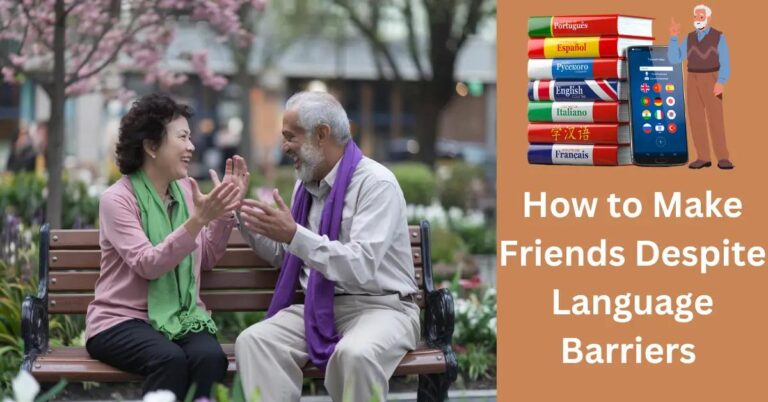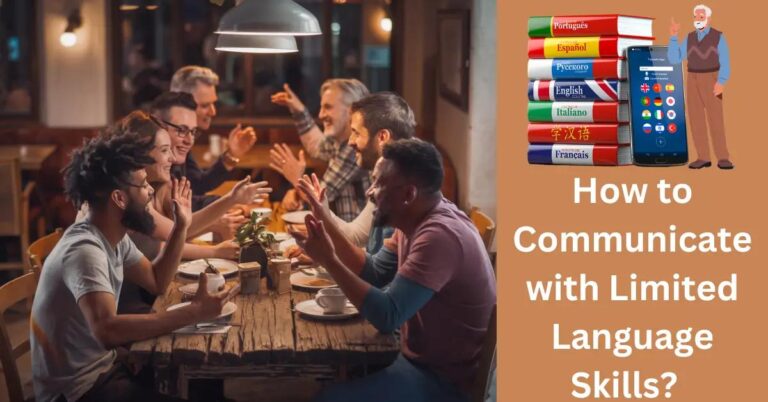TL;DR:
- Body language bridges cultural and linguistic gaps by conveying emotions and intentions.
- Understanding local gestures is crucial as the same gesture can have differing meanings across cultures (e.g., thumbs-up is positive in the U.S., offensive in the Middle East).
- Misinterpretations can strain relations; nodding means “yes” in some places and “no” in Bulgaria.
- Observing and mimicking local gestures enhances communication, such as smiling or bowing appropriately.
- Various cultures emphasize body language differently; e.g., Italy uses expressive hand gestures, Japan uses bows to show respect.
- Adjusting to cultural norms, like respecting personal space or eye contact, aids in positive interactions.
- Building intercultural understanding involves research, observing local practices, and learning the cultural norms.
Picture this: you’re in a bustling market abroad, surrounded by unfamiliar sounds and signs. How do you communicate without words? Enter the world of body language. It’s the bridge between cultures and a tool you can master. From understanding facial expressions to recognizing respectful gestures, non-verbal communication can ease your transition as an expat. Let’s explore how body language can make your overseas experience smoother and more meaningful.
Using Body Language to Communicate Abroad: How Effective Is It?
Body language can bridge the gap when words fail. Why is body language important when communicating across cultures? It conveys emotions and intentions that words sometimes cannot. In cross-cultural exchanges, it transcends language barriers, offering an almost universal method of understanding. Imagine trying to share laughter, anger, or surprise. Your body naturally steps in with gestures, posture, and facial expressions, speaking volumes when words can’t.
Non-verbal communication overseas varies widely, and understanding these differences is crucial. For instance, a thumbs-up may show approval in the U.S. but could be offensive in the Middle East. Cross-cultural body language differences can lead to confusion. How do people use body language to communicate in various countries around the world? In Italy, hand gestures are famously vibrant and expressive. In Japan, bowing shows respect. Across the globe, the same gesture can have diverse meanings, changing with cultural context.
Misinterpretations in body language can strain relations. A simple nod means “yes” in some places but “no” in others, like in Bulgaria. In India, shaking your head side to side often means agreement. Misunderstandings can occur without even speaking a word. These cultural contrasts highlight the importance of being mindful when interpreting gestures in different cultures.
Consider diplomatic communications, where body language plays a significant role. Leaders use non-verbal cues to complement and enhance their spoken words. A firm handshake, direct eye contact, or even the distance between people can influence diplomatic success. Studies and observations reveal that non-verbal skills can aid in negotiations and international relations.
Body language aids in communication globally, bridging cultural divides. Understanding it requires awareness of subtle nuances and cultural norms. This knowledge can enhance interactions and reduce miscommunication in multicultural settings.
Using Body Language to Communicate Abroad: How Effective Is It?
Understanding facial expressions in a new country can be like learning a new language. People show emotions like happiness, anger, and surprise, but not all expressions mean the same everywhere. How do travelers solve language barriers when traveling abroad? They use body language and facial expressions to aid communication. Yet, it is important to know local meanings to avoid misunderstanding.
Take smiling, for example. In some cultures, it shows friendliness and openness. In others, people might see it as a sign of shyness or uncertainty. A head nod usually means “yes.” But in some places, like Bulgaria, it might mean “no.” That’s why understanding body movement interpretation abroad helps a lot. Knowing local gestures can make your travel a more pleasant experience.
Think about using your fingers to show numbers. In the United States, showing the thumb alone means “one.” But in Germany, it means “five.” Imagine how easy it is to make a mistake! Some people solve this by watching others carefully and mirroring their actions. This shows respect and desire to fit in.
So, what is the best way to communicate when you don’t speak the language? Observe people and mimic their gestures and expressions. This strategy has helped travelers for ages. It shows you’re trying to connect, which locals often appreciate.
Enhance your travel experience through non-verbal skills. Rely on local friends, guidebooks, or online resources to learn about common expressions. Try to smile when others smile or shake hands in the usual way. These small efforts can improve your international communication skills. Being aware of these differences helps build better connections and respect.
Using Body Language to Communicate Abroad: How Effective Is It?
Cultural etiquette holds great importance in non-verbal communication. Each culture has unique ways of expressing respect. For example, while a thumbs-up gesture means “good” in many places, it is offensive in Greece.
Do some cultures rely heavily on the use of body language and gestures? Yes, several cultures place a strong emphasis on body language. In Italy, hand gestures often convey complex emotions and thoughts. In Japan, a simple bow shows respect and social status.
Recognizing and adapting to respectful gestures globally is key to positive interactions. In Thailand, touching someone’s head is disrespectful. Understanding such cultural cues can prevent misunderstandings.
What are some body gestures and their meanings in different countries? In Bulgaria, nodding your head means “no,” while shaking it means “yes.” In the Middle East, it’s polite to greet with the right hand. Knowing these differences helps in building trust.
Practicing sensitivity towards different cultural body postures shows understanding and respect. For instance, keeping eye contact can be seen as aggressive in some Asian cultures. However, in Western cultures, it signifies trust and attention.
Learning to recognize cultural body postures worldwide involves research and attentiveness. While smiling may usually signify friendliness, in Russia, excess smiling can raise suspicion. Always observe local norms and follow accordingly.
In Brazil, hugging is a common greeting, unlike in China where a handshake is preferred. Respectful body language worldwide involves understanding these differences to communicate effectively and courteously.
To deepen your knowledge, it’s crucial to study and observe. Engaging with locals and asking about their customs helps. Respecting each culture’s nuances bridges communication gaps and enhances your global interactions.
Using Body Language to Communicate Abroad: How Effective Is It?
Communicating with someone using body language is called non-verbal communication. When you find yourself in a foreign land without knowing the language, non-verbal signals become crucial. They convey messages and emotions without words. Eye contact, for instance, plays a big role in communication across cultures. In some countries, like the United States, eye contact shows confidence. But, in places like Japan, too much eye contact can seem impolite.
In various cultures, signs of respect can differ a lot. A slight bow in Japan can indicate deep respect, whereas a firm handshake might mean sincerity in the United States. It helps to learn these signals to interact smoothly with locals. Remember, these gestures are not universal. What shows respect in one culture might be disrespectful in another.
Adapting to cultural signaling means being attentive to what others do. You must watch how people stand, greet, or say goodbye. Observe these actions and learn from them to avoid misunderstandings. Look for cues like a smile or nod, which might mean welcome or agreement. You can try mimicking these actions to be sure you fit in.
Here are some techniques for improving intercultural interactions. First, be mindful of personal space. In some cultures, people stand close during conversations. In others, they prefer more space. Adjust your distance based on the local custom. Second, when in an unfamiliar country, follow the locals’ lead. If they greet with a bow, do the same. If they smile often, return the smile. Lastly, practice active listening. Use your eyes to show you are paying attention, even if you don’t speak the language. Doing this helps to build trust and rapport.
Conclusion
Mastering body language boosts cross-cultural communication. Non-verbal cues help bridge language gaps. Misinterpretations can be common but knowing gestures eases this risk. Eye contact and facial expressions differ worldwide but learning them enriches your travel. Respect local gestures and practice cultural sensitivity for better bonding. Adapt body language to show respect and understanding to others. By embracing these skills, you enhance interactions and build connections in any country. Non-verbal signals speak volumes; tune into them to navigate foreign lands successfully.







